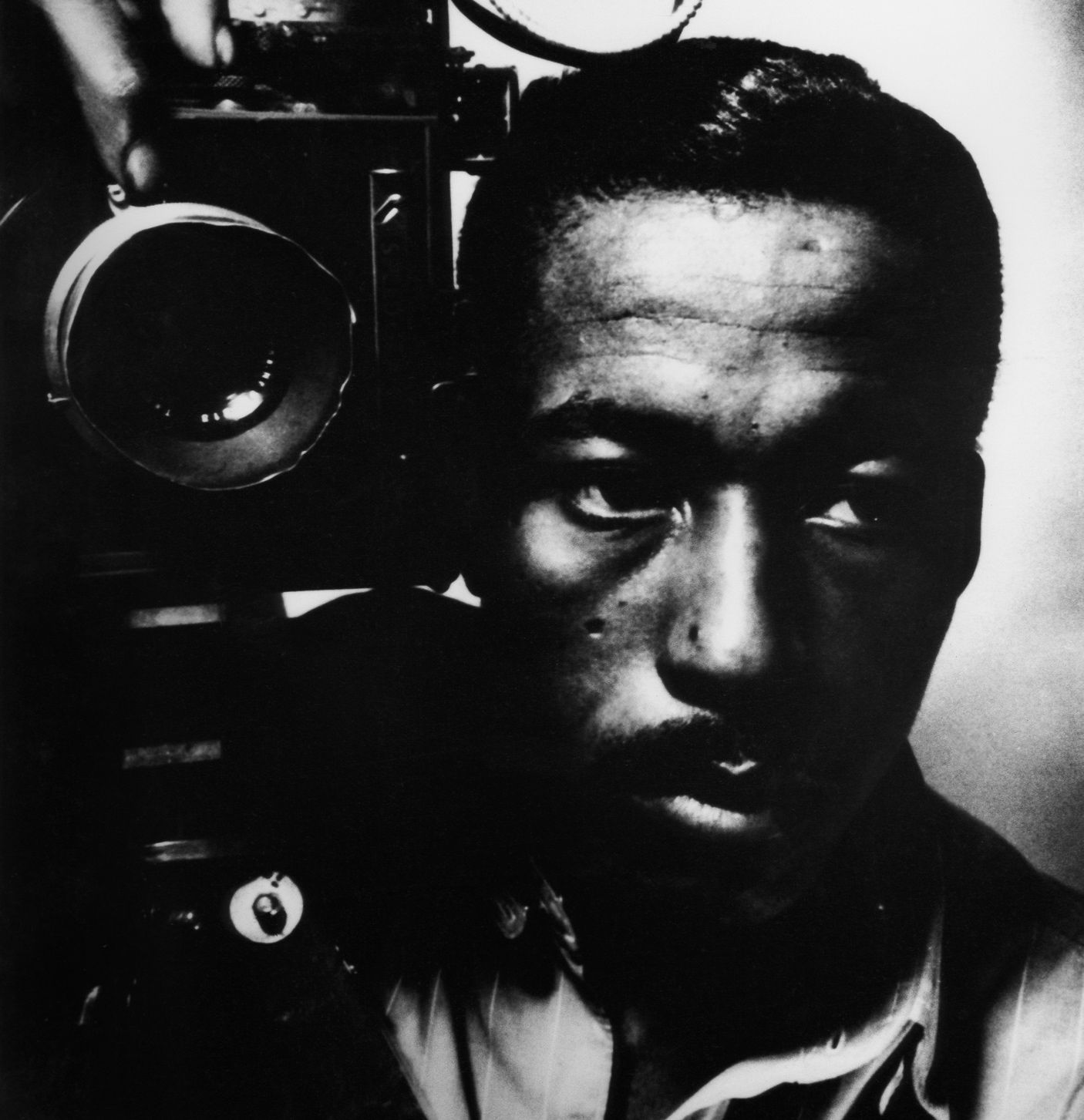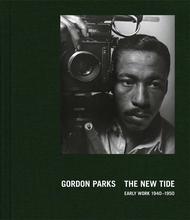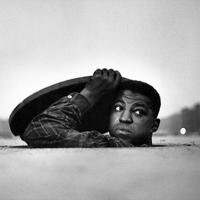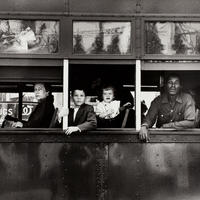More about Gordon Parks
- All
- Info
- Shop
Works by Gordon Parks

Sr. Contributor
Life was a box of odd jobs and accomplishments for Gordon Parks.
Before Gordon Parks created the film Shaft and helped create the Blaxploitation film genre of the ‘70s, he had Cinderella-esque beginnings. He lost his mom at fifteen and his family split apart. His sister took him in with open arms for all of a month before his brother-in-law told him to hit the road or, more aptly, the railroad.
Parks rode a trolley every night for two weeks to keep from freezing, then spent the next decade doing odd jobs like playing piano in a brothel. The turning point in his life happened on the railroad while working as a waiter on a transcontinental train. His silver lining to cleaning up the litter people left behind was being exposed to photo essays in magazines. Most notably those taken by Roy Stryker. Inspired, Parks bought a camera, won a fellowship from his first photography exhibition, and used it to move to D.C. to work for Stryker.
From then on his life becomes one of the world’s most impressive resumes. It makes Forrest Gump look unaccomplished in comparison. He became the first African American photographer at both Life and Vogue Magazine. Then he moved into the film world and became the first African American to produce, direct, write, and score a major Hollywood feature film. On top of all that he did portraits of famous figures ranging from Langston Hughes to Barbra Streisand.
Somehow, he also found the time to write a ballet named Martin in tribute to Martin Luther King, Jr. and court Gloria Vanderbilt and the creator of Sex and the City between marriages.
To say that his work was impactful would be an understatement. Malcolm X was so moved by his photo essay on the Black Muslim community that he named him godfather of his daughter. His work was also potentially lifesaving when his photo essay on an asthmatic Brazilian boy named Flavio in a poor neighborhood inspired readers of Life to send around thirty thousand dollars so the boy could receive proper treatment. The music video for Kendrick Lamar's 2017 song "ELEMENT" recreates iconic images from Parks' photo documentation of African American communities and the Civil Rights movement.
In the film world, his movie Shaft achieved one of the major Hollywood measures of success: a string of unnecessary follow-ups to milk it for all it’s worth. Shaft got two sequels in the ‘70s, one short-lived tv show, and a remake/sequel in the early 2000s starring Samuel L. Jackson. If you are looking to see a Shaft film in theaters, you’re in luck. The second remake/sequel comes out in the summer of 2019.
Sources
- Anderson, Tre'vell. "Blaxploitation in a 'Panther' World." Digital Edition Chicago Tribune. Accessed November 20, 2018. http://digitaledition.chicagotribune.com/tribune/article_popover.aspx?g… =4f56a175-788f-41c1-bd53-e34e4c48cd2a.
- Berger, Maurice. "Gordon Parks on Poverty, the 'Most Savage of Human Afflictions'." The New York Times. September 10, 2018. Accessed November 20, 2018. https://www.nytimes.com/2018/09/10 /lens/gordon-parks-on-poverty-the-most-savage-of-human-afflictions
- Cripps, Ed. "Gordon Parks: Through the Lens." The Rake. March 07, 2018. Accessed November 20, 2018. https://therake.com/stories/icons/gordon-parks-through-the-lens/.
- Finn, Natalie. "Django Unchained: Shaft Prequel?!" E! Online. July 14, 2012. Accessed November 20, 2018. https://www.eonline.com/news/330255/quentin-tarantino-talks-django-unch… -character-named-shaft-no-accident.
- "Gordon Parks." International Photography Hall of Fame. Accessed November 20, 2018. http://iphf.org/inductees/gordon-parks/.
Featured Content
Here is what Wikipedia says about Gordon Parks
Gordon Roger Alexander Buchanan Parks (November 30, 1912 – March 7, 2006) was an American photographer, composer, author, poet, and film director, who became prominent in U.S. documentary photojournalism in the 1940s through 1970s—particularly in issues of civil rights, poverty and African Americans—and in glamour photography. He is best remembered for his iconic photos of poor Americans during the 1940s (taken for a federal government project), for his photographic essays for Life magazine, and as the director of the films Shaft, Shaft's Big Score and the semiautobiographical The Learning Tree.
Parks was one of the first black American filmmakers to direct films within the Hollywood system, developing films relating the experience of slaves and struggling black Americans, and helping create the "blaxploitation" genre. The National Film Registry cites The Learning Tree as "the first feature film by a black director to be financed by a major Hollywood studio."
Check out the full Wikipedia article about Gordon Parks















